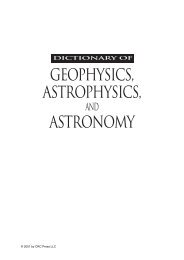tc dokuz eylül university institute of social sciences translation and ...
tc dokuz eylül university institute of social sciences translation and ...
tc dokuz eylül university institute of social sciences translation and ...
You also want an ePaper? Increase the reach of your titles
YUMPU automatically turns print PDFs into web optimized ePapers that Google loves.
complete, because <strong>of</strong> its peculiar place, that <strong>of</strong> being possibly the first <strong>translation</strong>. It<br />
is not abridged or adapted but has a full text as far as it goes.<br />
Another remarkable point is the <strong>translation</strong>s from an intermediate language.<br />
There are four <strong>translation</strong>s identified in the corpus that are from French instead <strong>of</strong> the<br />
source language English. Out <strong>of</strong> these four, only Ardıç’s <strong>and</strong> Beşli’s versions<br />
mention that it was translated from French. What is interesting about Ardıç’s is that<br />
in this <strong>translation</strong> there are some footnotes to some <strong>of</strong> the puns explaining how the<br />
two words make wordplay in English! The next one Beşli’s which gives a prologue<br />
under the title “Eseri Sunarken (presenting the work)” explaining that Beşli had<br />
translated it from French but after his death it was revised by Naime Halit Yaşaroğlu<br />
comparing from its original language, English. They claim that their <strong>translation</strong> was<br />
directly based on the original but confess that they shor<strong>tc</strong>ut some <strong>of</strong> the puns in<br />
English because those puns do not ma<strong>tc</strong>h with our language!<br />
The other version from French is that <strong>of</strong> Mater, which is understood to be<br />
from the second language, through an article about the cultural facts in Alice in<br />
Wonderl<strong>and</strong> (Toral Barda, 1998; 124). The fourth one is Özbay’s rendition, which<br />
although it was not mentioned in the book, one comes to the conclusion that it might<br />
have been rendered from French, the language that was very popular in those years in<br />
Turkey (1973), because <strong>of</strong> some <strong>of</strong> the names that are changed, e.g. from Bill into<br />
Peter, Dinah to Sarman like in Beşli’s, Marry Ann to Marian. It has also very similar<br />
<strong>translation</strong> <strong>of</strong> some puns as that <strong>of</strong> Ardıç’s, which was also translated from French,<br />
such as Chester kedisi (Ardıç) - Çester Kedisi (Özbay); this was translated into<br />
French as Chat de Chester (Carrol, 1980), Dana başlı Kaplumbağa (Özbay, Ardıç),<br />
Akbaba (Özbay, Ardıç). These three examples make it clear that these two target<br />
texts were translated from the intermediate language, French, as the three names in<br />
the source text are indeed quite different from the ones in the <strong>translation</strong>s. The last<br />
example is unique. The wordplay, ‘pig or fig?’ was translated as ‘Keçi yavrusu mu,<br />
geyik yavrusu mu?’ (‘chévre, ou cerf?’ in French – rhyming, ‘kid or fawn?’ in<br />
English – not rhyming) which is far away from what it clearly says in the source text.<br />
Apparently, the translator from the intermediate language, most likely French, chose<br />
these animals in order to compensate the pun <strong>and</strong> get the same rhythm <strong>and</strong> when<br />
42
















